Podcast: Download
Subscribe: Apple Podcasts | RSS
 Instantly memorizing what you need to know is the ultimate dream, isn’t it? Mnemonic devices can get you quite close to that learning goal.
Instantly memorizing what you need to know is the ultimate dream, isn’t it? Mnemonic devices can get you quite close to that learning goal.
But let’s face it.
There’s no such thing as perfect memory.
What we do have are the kinds of mnemonic tools we’re going to discuss today.
Including examples of people who have absorbed astonishing amounts of information using them.
How do I know so much about all of these memory boosting tools? In such depth?
For the past fifteen years, I’ve been operating as the host of the Magnetic Memory Method podcast. I have interviewed dozes of memory experts and memory athletes.
Not only do I interview people who use these techniques. I use them myself and have written many books about them.
As a result, I’ve received dozens of questions every week since 2012 from people who read my books and this blog.
I share my knowledge openly, especially since mnemonic devices to help me memorize a variety of things to complete my PhD during a time of intense struggle.
Later, mnemonics helped me learn German so I could teach in Germany, which I did for several years.
But for many people who don’t yet understand what mnemonic devices are and how to use them, their inability to remember anything presents the ultimate nightmare.
One reason people struggle to master their memory is simple:
There are so memory experts out there who use different terms for the core memory techniques you need to succeed. It can be confusing.
Don’t fret. on this page, I’ll help you understand everything and help you find the memorization approach that will work best for you.
Here’s what this post will cover:
What Is A Mnemonic Device?
Mnemonic Devices Examples
– Personally Created Flashcards
– Acronyms
– The Memory Palace Technique
– Associative Imagery, Linking, and Pegwords
– Story Method
– Major System and Dominic System
– 00-99 PAO
– Mind Maps
So if you’re ready to dive in, let’s get started with…
What Are Mnemonic Devices?
The best mnemonic device definition we can start with is this:
Anything that helps you remember better is a mnemonic.
Even the dictionary says that mnemonic devices are anything: “assisting or intended to assist the memory.”
Many of them operate like mental snapshots.
But that’s a modern metaphor.
As you’re about to learn, the techniques are rooted in the ancient world.
They’re perfectly validated by modern memory science too. Researchers have tested everything from Aboriginal memory techniques, to mnemonics that are science-backed for use in schools.
Overall, “mnemonics” is a highly adaptable term. It’s ultimately an umbrella term that covers a wide range of tactics and strategies. As you’ll see, you can optimize in your personal practice.
Mnemonic Device Types
Keeping the ancient world in mind, here are the major types of mnemonic devices in use today:
- Personally created flashcards
- Acronyms
- Memory Palaces (sometimes called a Mind Palace, the Method of Loci, Journey Method, or Roman Room)
- Associative imagery, linking, and pegwords
- Story method
- Major System or Dominic System
- 00-99 PAO
- Mind Maps
- … and more
But here’s something to notice that might be helpful.
Flashcards really are “devices.” They are objects that you create and sort through using your hands.
Memory techniques like the Memory Palaces, however, involve the use of mental imagery as a process.
As memory expert David Berglas made clear in A Question of Memory, memory is not a unitary mechanism or a “thing.” It is a behavior.
And that is how you use mnemonic devices. You understand them as processes and then you sprinkle mnemonics into your life strategically so that applying them becomes part of your learning behaviors.
Of course, there’s more to it than that. Let’s have a look.
How Mnemonic Devices Work In The Brain: The Neuroscience Of Memory
As a technique, mnemonics leverage visual memory, auditory memory, spatial memory and other natural types of memory.
At a basic level, research shows that mnemonics create stronger connections in the brain.
Here’s what weak memories look like in your brain.
When you use mnemonic devices to create stronger connections throughout your brain, the scans clearly paint a picture of much stronger memory:
One of the most impressive mnemonic tools you can use is the Memory Palace.
As this study from the brain science journal Neuron has shown, Memory Palaces helped people go from recalling an average of 30 words (from a list of 72) to remembering more than 60.
In other words, using this specific mental tool helped people double the amount they could remember.
A Personal Example Of How A Variety Of Mnemonic Devices Helped Me
Let me make these research findings concrete for you:
When I gave a TEDx presentation, I did more than merely memorize my talk.
On the day I delivered the speech in Melbourne, Australia, I also became deeply familiar with the people I met using a specific technique for memorizing names.
This means that I used a wide variety of techniques (see how to memorize a speech) and chose the specific mnemonic devices based on the circumstances.
This is just one of many examples where I’ve used multiple mnemonic types to accomplish incredible results in my life.
And all it takes is study and practice.
With deliberate practice in particular, you’ll find that using mnemonic devices happens almost on autopilot!
What Mnemonics Can Help You Learn
I just mentioned how I used a variety of techniques to memorize my TEDx Talk.
It’s possible to memorize just about anything you want when you have the core techniques under your belt. Including:
- Planets
- Poetry
- Scripture
- Phone numbers
- Names
- Nursing, pharmacology and medical terminology
- Product types (which can help you get a raise or promotion at work)
- Self-help tips that help you develop mental strength
- Dance moves
There’s literally nothing I’ve seen yet that mnemonics can’t help you remember. In fact, when I was invited to moderate at the 2023 Pan-American Memory Competition, the top memory athletes used a combination of the techniques on this page to memorize cloud formations.
In other words, it’s even possible to memorize abstract shapes when you use these techniques.
Mnemonic Devices Examples & How to Use
Mnemonic Devices For A Variety of Learning Goals
Let’s dig a little deeper using our list of mnemonic examples above.
One: Personally Created Flashcards
My friend and language learning expert Gabriel Wyner inspired me to give these a try after reading his book, Fluent Forever.
Basically, instead of downloading software put together by a stranger, get some paper and colored pens. (Obviously, you also have all the information you want to memorize organized too.)
Next, use the paper and colors to help you create images. These images should remind you of the target information you want to recall.
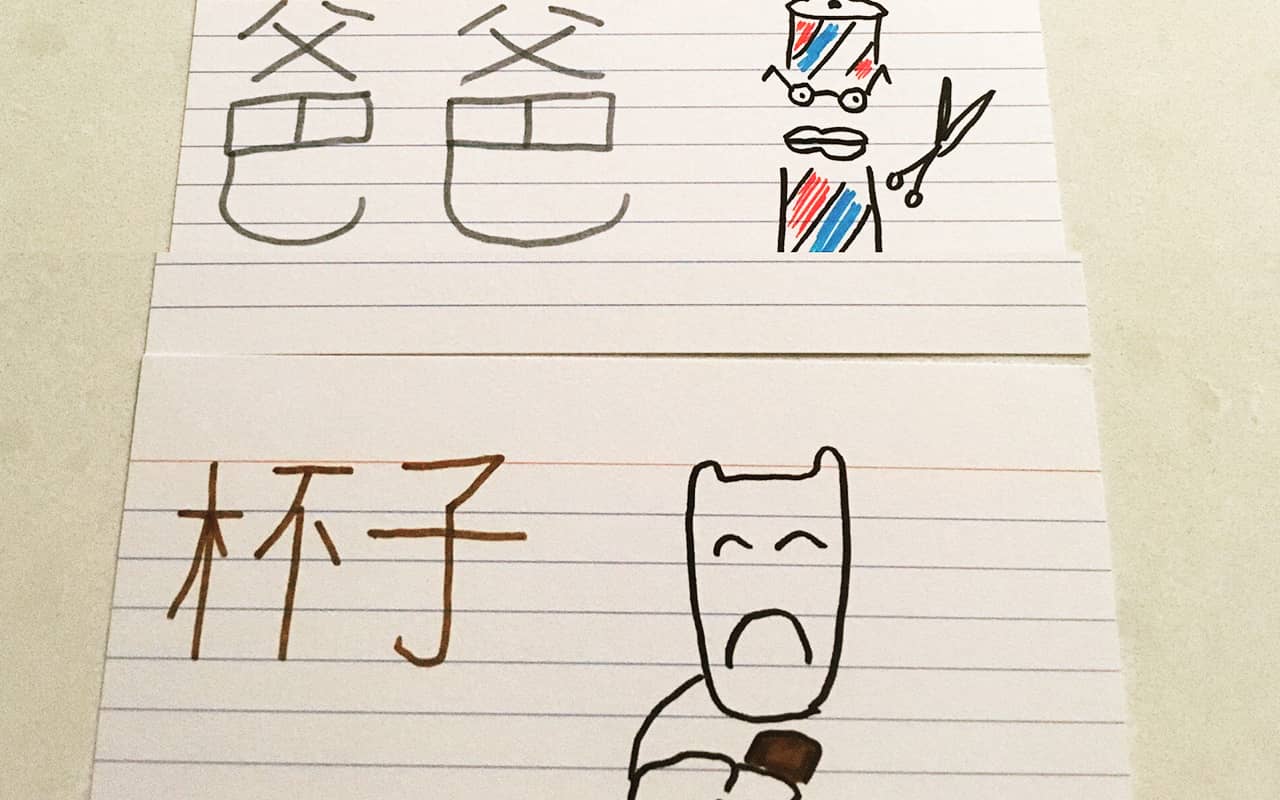
Now, there’s a whole lot more going on in this example, so please keep it in mind. I’ll go deeper into it later in this post.
For now, if you’re worried about having a bunch of cards flying all over the place, don’t be. You can wrap them up in a Memory Palace drawing just like this:
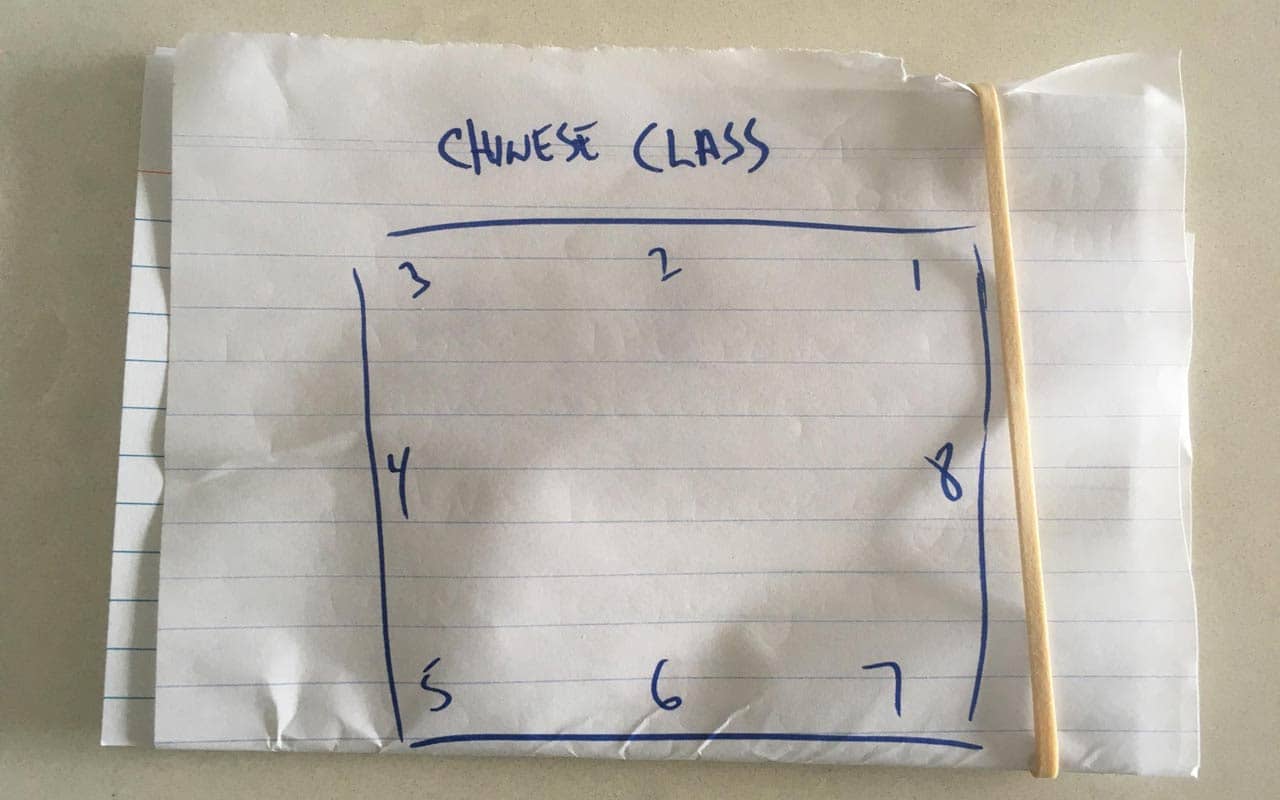
Next, let’s look at how abbreviations can help.
Two: Acronyms
Have you ever asked… what is it called when you use letters to remember words? As usual, there’s no one answer, but the first method is called an acronym.
For example, when I teach memory improvement in a live setting, I usually talk about how following the rules will set you F.R.E.E.
“Free” is a word that helps me remember the meta-rules students need to make learning with memory techniques easy and fun:
Frequent practice in a state of…
Relaxation and a spirit of…
Experimentation so that you can be…
Entertained
Just follow those rules as you use mnemonic devices and you will truly be free to memorize as much as you want.
The best part?
Because acronyms are a form of chunking, you can use this approach to lay out acronyms inside of a Memory Palace.
Chunking is a memory strategy more than it is a device, but by breaking information down into smaller groups, you’re following Miller’s Law.
George Miller was the psychologist who discovered chunking and noticed that our brains can hold 7±2 items in working memory at any given time.
Memory athletes make use of this principle all the time, as do learners who use acronyms.
Some example acronyms that people often use include:
- “My Very Excellent Mother Just Served Us Nachos” (for the planets)
- “Hibiscus vs. PacMan leads to victory for many, many reasons” (for remembering the vaccine schedule)
- “Onward, Onward, Onward Two Travelers And Foxes Very Greedily Verified Ascending Happily” (for memorizing the cranial nerves)
Frankly, many of my students find acronyms to be the least effective mnemonic devices for learning semantic information.
That said, one study has shown compelling evidence that acronyms are good for remembering the sequence of actions in a task (sometimes called procedural memory).
That’s why I sometimes use the FREE acronym model when giving simple presentations. It’s proven to work for this kind of task. I just wouldn’t use acronyms for larger speeches or long term learning goals, like developing fluency in a language.
My point is this:
Use acronyms with caution, or at least combine them with the most powerful mnemonic device of them all, which is the one we’re going to cover next.
Three: The Memory Palace Technique
The Memory Palace is an ancient technique. It uses familiar spaces as a core mnemonic device.
It used to be called the method of loci because people would assign specific locations within a home or along a journey. Then they would place associations along this journey that helped remind them of various types of information.
You can start the process of using this technique now by thinking about a familiar location.
Next, chart out a logical journey that does not take energy from your memory. If you have to memorize the journey, it is not a good Memory Palace, so pick another location.
A Memory Palace must be based on your memory of the space. Do not memorize a location to use this technique – that would be called a Memorized Palace and simply takes too much work.
And don’t worry if you can’t remember each and every detail of a location.
For example, I once visited a bookstore in Zamalek. This is a part of Cairo, Egypt.
I don’t remember every single part of the bookstore and that’s find. As you can see in the illustration below, I used only the parts of the bookstore I remembered.
To help my brain reduce the cognitive load even further, I made a quick drawing of the space as part of the planning processed:
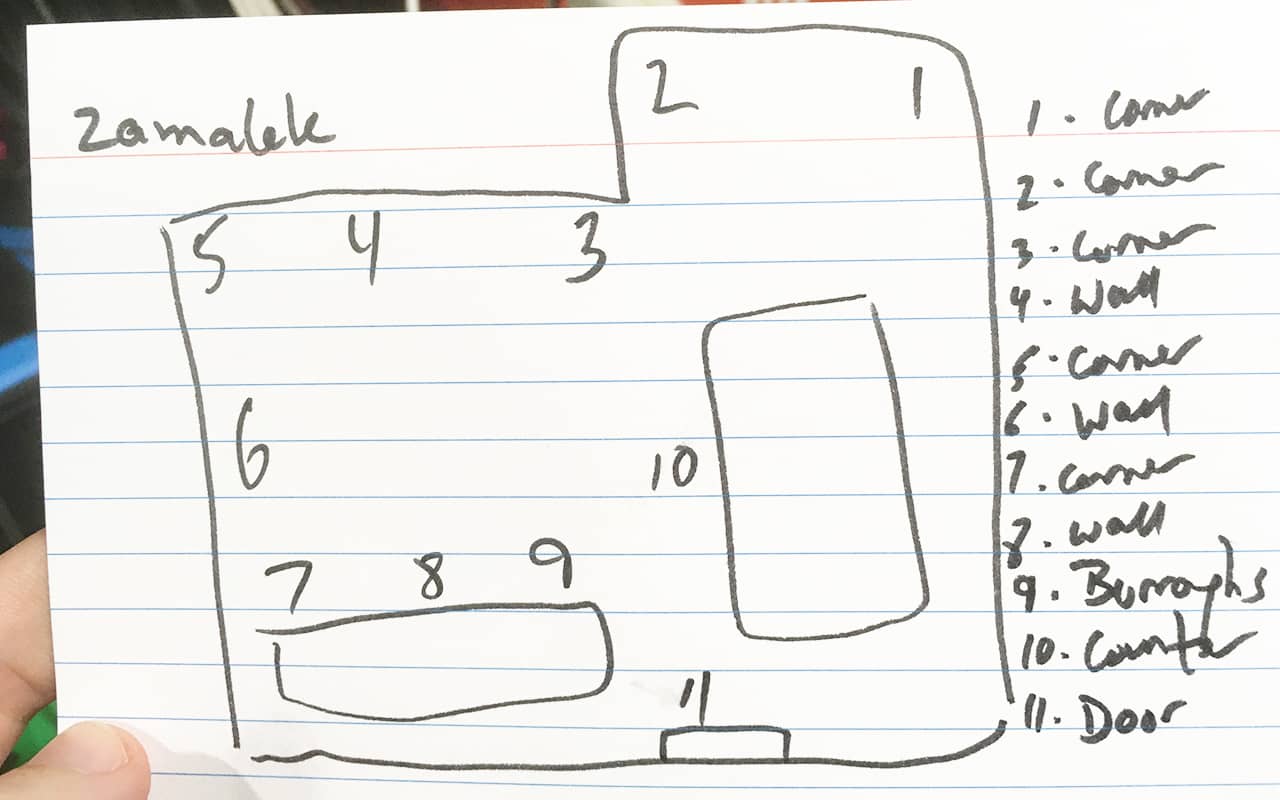
Keep in mind that I’m using the word “drawing.” But this is more like a “chicken scratch.” It’s purely for planning purposes and not meant to be high art.
Notice I’ve also drawn the Memory Palace on an index card (or flashcard). I do this because it makes it easy to store many of them for quick reference if I ever need them in the future.
Next, I strongly recommend that you write down the number of your stations and name them.
I find this step helps me “set and forget” the Memory Palace and ensure I’ve gotten it right the first time. It also helps me make sure that I don’t overload the Memory Palaces, an issue Peter of Ravenna identified with his memory students during the medieval period.
Four: Associative Imagery, Linking, and Pegwords
Inside of your first Memory Palace, place a list of mnemonics you create. These will be a kind of mnemonic that are multi-sensory.
For example, think back to that first image I shared above with the flashcards for Chinese. Those colorful drawings help me remember the sound and the meaning of the Mandarin words.
But those mental images aren’t just on the flashcards! They’re also mentally situated on stations in the Memory Palaces I use.
(Some people call these stations “loci.” It’s basically the same thing, but “Magnetic Station” is my preferred term because recent advancements make them much more powerful than the ancient teachings suggest.)
To make such imagery, you will want to complete a number of exercises.
For example, go through the alphabet and think of an image for each letter. The pegword method is a great way to explore this technique further.
If you’re really serious about mastering the Memory Palace technique, you can explore having an image on each and every station.
For example, when I memorize cards, I always have images on the stations to help me “trigger” the row of cards I’ll be placing and later recalling on a Magnetic Station.
Basically, what I’m talking about is multiple levels of linking all at once. Some people talk about the linking method in a weak way. Their suggestions amount to little more than “this links to that.” I don’t find that approach is strong enough and certainly don’t use linking as superficially as other teachers tend to describe the method.
What most of us need is for our association imagery to combine:
- Sound and meaning links at the granular level of the alphabet
- Multi-sensory links that are concrete and specific, not vague and abstract
- Tied tightly to space so that we are working from the foundations of the strongest level of memory: spatial memory
Furthermore, the real trick with these associative images is that they must:
- Actually associate in a way that triggers what you want to memorize (for example, the barber symbol I used on the card above triggers the ‘ba’ sound).
- Help you get back the meaning of the content (where relevant).
- Have a Memory Palace so you can mentally “find” the imagery. Some people don’t need the Memory Palace, but in my experience, they are few and far between.
And when you think about what mnemonic devices mean more holistically, each card is a kind of station in a Memory Palace.
Five: Story Method
Using a story (with or without a Memory Palace) is not much different than using, links pegs or associations. The only difference is that with the story method you’re adding the extra step of creating a narrative.
Why use it at all?
As Wang and Ross have demonstrated, the human brain is wired for story.
Stories also cause you to create strong cause-and-effect associations. They don’t have to be logical, but adding a certain rational element to them helps make recall effortless.
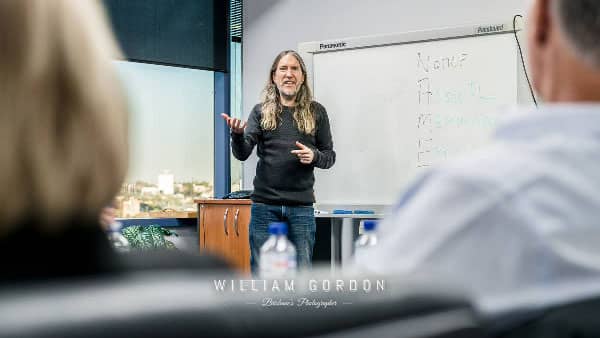
For example, let’s take the example of a time when I memorizes a list of names at an event in Brisbane that started with:
- Haley
- Allan
- Sharon
- Andrew
- Edward
- Angela
- Sam
If you were using pegs, you would look at “h” when seeing Haley and associate her with something like Halley’s comet or a hat. Allan could be associated with an Allen key.
You can also spontaneously produce associations or have stock characters. For example, every Sharon could be Sharon Osbourne.
The story method, on the other hand, requires us to add a narrative to the association, such as:
Halley’s comet is crashing into an Allan key in the hands of Sharon who finds it burning hot and hands it to Andrew.
The story method can possibly be used without a Memory Palace. However, stories have parts. And those parts exist somewhere in your brain which means they are inherently spatially located.
I think you’ll find it a lot less mentally taxing to lay out any narrative elements you use in a Memory Palace.
Another way to approach the story method is to use a movie or novel plot you know well.
For example, let’s say you have mentally reduced The Matrix series down to three scenes: the hotel, the desert of the real, and Neo’s cabin on Morpheus’ ship.
For the first piece of information you want to remember, you would use the first room and perhaps Trinity doing her flying kick. Then you would move on to the next location for the next piece of information.
This example shows how stories are always spatial in nature… after all, if they don’t take place somewhere… how can they be stories?
Six: The Rhyming Peg System (Rhyme Mnemonics) for Amplifying Your Stories
Closely related to the story method is the number rhyme technique.
It works through what some scientists call “phonological encoding.”
To use rhyming mnemonics as part of creating supercharged recall, you need to first create your rhymes.
The ones I use are:
- One is a bun
- Two is a shoe
- Three is a bee
- Four is a door
- Five is a hive
- Six is (drum) sticks
- Seven is my friend Evan
- Eight is a gate
- Nine is wine
- Ten is hen
There are different ways to use number rhymes. For example, if you have to remember a list, you can associate the first item with a bun.
You are essentially making a tiny story. If the first item is a carrot, you put that carrot in a bun, which is kind of weird and memorable.
Likewise lettuce inside your shoes will be difficult to forget.

Seven: The Number Shape System
One of my favorite approaches involves making stories from numbers that I imagine as different types of shapes.
To use it, you think about what the numbers 0-9 look like. Then you associate them with those shapes.
Here’s my list:
- 0 = a donut
- 1 = a candle
- 2 = a swan
- 3 = handcuffs
- 4 = a sailboat
- 5 = a seahorse
- 6 = a fishing hook
- 7 = a boomerang
- 8 = a snowman
- 9 = a golf club
To make a story using this technique, you could simply have your number one item being burned by a candle.
Your second item takes a ride on a swan, and so forth.
Ultimately, there is no right or wrong with these techniques. You can use stories on your own or amplify them with either number rhymes or number shapes.
The choice basically comes down to your level of skill, the context, and the nature of the information.
When it comes to memorizing numbers themselves, there are some very powerful mnemonic devices to discuss. Let’s examine the first of them next, and I do hope you find an opportunity to learn and use it.
Eight: Major System and Dominic System
When it comes to associative imagery, the alphabet is a great tool. But it can also be mixed with numbers.
The Major System (often called the Major Method) helps you associate a consonant with each digit from 0-9. This mnemonic device has been in use since the Katapayadi of ancient India.
A more common approach that has been in use since the 1700s looks like this:
A more recent innovation is the Dominic System. It has some key differences, so make sure to study both.
Nine: 00-99 PAO System
PAO stands for Person, Action, Object. Basically, you’re taking the Major System and using it to help you make words from numbers.
Here are some examples from mine:
- 01 – Sad (tragedy mask)
- 02 – Sun (from the movie Sunshine)
- 31 – Maid
- 86 – Fish
Notice that I’ve put some concrete examples for you in parentheses. I’ve done this because “sad” is not very evocative. It’s just a concept.
But when I think of a tragedy mask, it links the word based on the Major more closely to the concept of sadness.
To make the mnemonic connection even more specific, I think of the tragedy mask worn by William Shatner in Oedipus Rex. As you might already be thinking, the process I’m sharing adds a layer of elaboration that works by adding in a bit of the story method.
Ten: Mind Maps
Tony Buzan is one of the greatest innovators of mind mapping, but he says in Mind Map Mastery that he abandoned this technique for improving memory back in the 70s.
He focused more on using keywords that help with creativity, problem-solving, and planning.
I feel that the conclusion to remove their use as a memorization tool was premature. If you would like to learn how to combine mind maps with Memory Palaces, for example, here’s a simple way to also add in the Major System for incredible results:
As you can see, it’s fun to mix keywords with the Major Method on paper in a way that turns the mind map into a simple Memory Palace.
And this is really just the beginning when it comes to learning how to remember things.
It’s not just that there are a TON of mnemonic devices to choose from. It’s that we get to delight in how they can be mixed and matched in so many ways.
I Love Using A Combination Of Mnemonic Strategies — How About You?
We’re incredibly lucky.
Although it can be confusing, the Internet has enabled dozens of memory competitors, memory athletes, and plain ol’ memory fanatics like me to create tons of free content for the world.
Even though it’s easy to get lost in the intricacies, remember: Memory is not a thing. It is a behavior.
Dive into each of the approaches you learned today.
Really dig deep into their nuances through practice.
Let me know if you found this guide helpful and comment below. If there are mnemonic devices I missed, please share it so I can update this post. All of us will be eternally grateful.
And if you want to learn more about how to make the most of your new mnemonic strategies using a Memory Palace, pick up your free copy of the memory improvement kit today. Just go ahead and click this image to get started:
Related Posts
- Memory Athlete Braden Adams On The Benefits Of Memory Competition
Braden Adams is one of the most impressive memory athletes of recent times. Learn to…
- 5 Mnemonic Strategies You Can Use to Remember Anything
These 5 mnemonic strategies will help you use every mnemonic device with ease and efficiency.…
- The Only Planet Mnemonic You Need
Looking for the best solar system mnemonic? Don't settle for anything but the best. Learn…

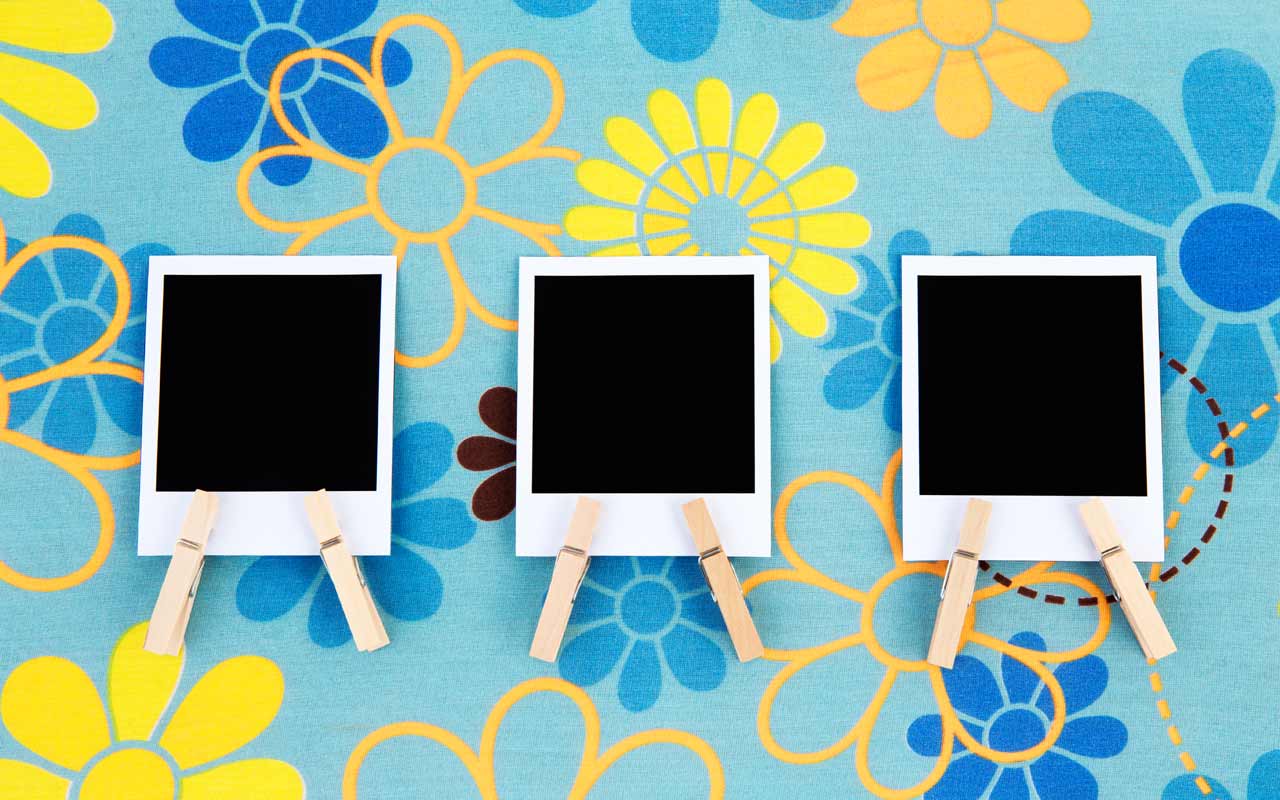


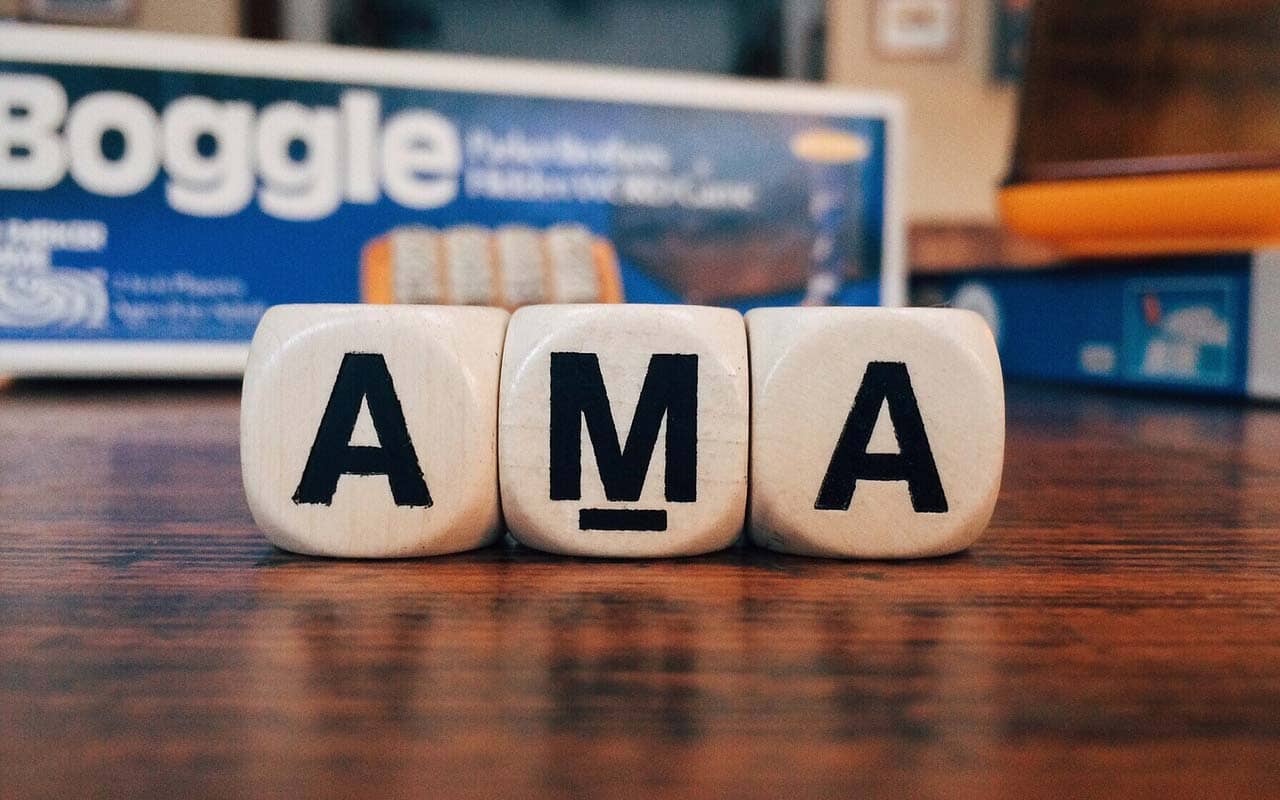

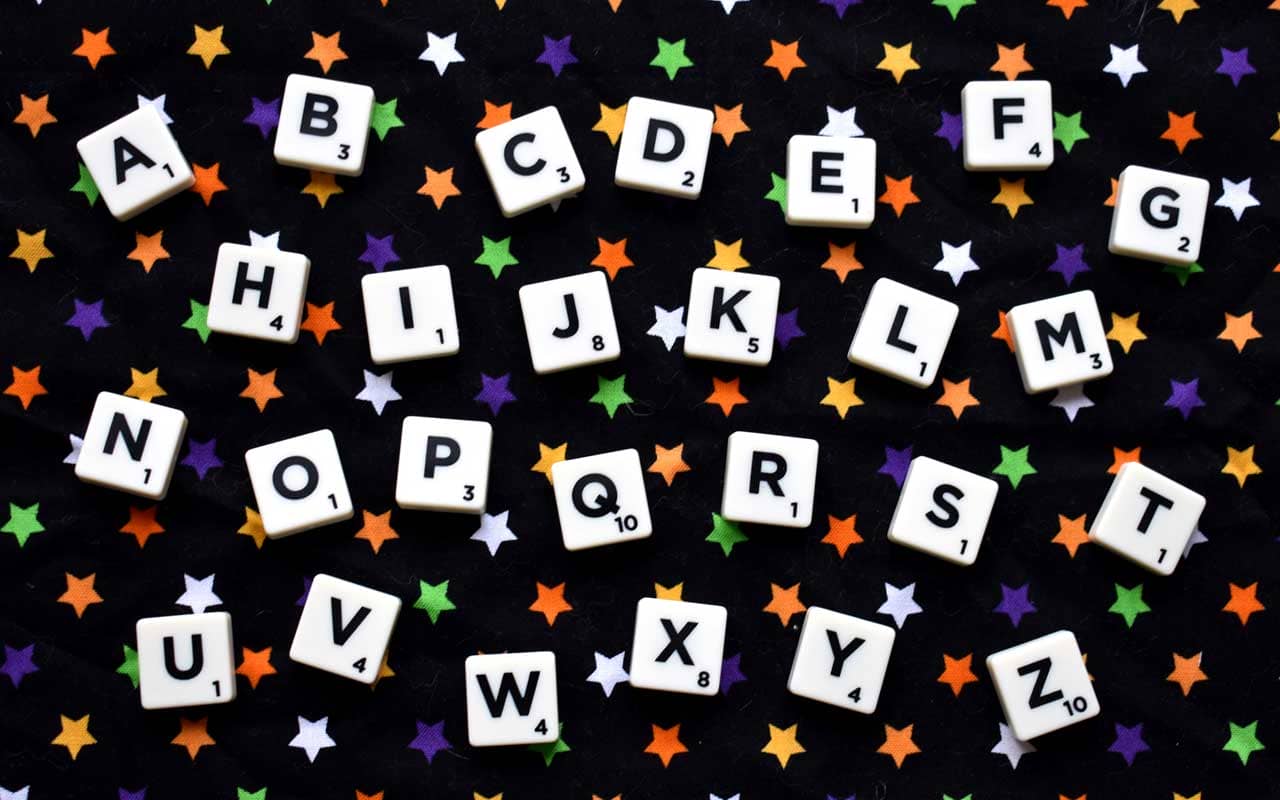







24 Responses
I love this! This is an award winning podcast. Keep up the great work Anthony.
Thanks so much for checking this one out, James. Always great to hear from you and all of us who use mnemonics appreciate your support!
Thank you Anthony, for this easy to understand knowledge, gathered all together in one place, and a mind map of the today known systems for learning new bits of anything!!
Using your magnetic memory method I managed to make a PAO in Greek language (00-99) and after that to learn 126 digits of Pi “π” in 10 hours! It would be imposible for me to do it without your help!
That’s so great, Theodore. Thanks for letting myself and the community know!
What are the next goals on your mnemonic bucket list?
Maybe to go at first to 180 Pi digits (the learning packet of 6 numbers each and is uploaded in a memory palace of 45 loci)…
That sounds like a great goal – please keep us posted on your progress! 🙂
Hi, I was wondering how to do mnemonics with programming languages? It feels like a plateau for me. Any help for this kind of mnemonic?
Thanks for this question, Andy.
I’m not sure what you mean by “plateau,” but I haven’t seen anything in any programming language that could not be memorized so long as the learner has:
1. A Memory Palace system
2. A number association system
3. An alphabet association system
4. A symbol association system
5. A Recall Rehearsal system
What programming languages are you looking at learning?
I don’t have time to study all of those as I’m learning python now. Is it okay if I learn one of each system and python? Because learning all of those systems will take a while. Can I go back and make mnemonics out of them?
And what I mean by plateau I only know how to do mnemonics for Romanized languages. I haven’t learn other types of mnemonics.
There’s a common misconception that mnemonics have something to do with particular languages. They do not.
All languages share multiple sounds and so long as you develop your systems, you can cross multiple languages. Have you seen the video I have on YouTube where I show an example of using German words to help memorize Mandarin words?
I suggest you avoid exaggerating how long it will take to learn these systems. Most people can get set up with all of them over the course of a weekend.
After that, it’s just practice, which one assumes will be conducted for life, not just a while.
I don’t know what you mean by “going back” to make mnemonics out of “them,” but as we practice, we often have opportunities to improve our previous images. There is no perfection in this art and it is assumed that things will change over time as we work to improve our skills.
Hello, thanks for the information.
Do you have extra classes, or could you explain what you mean by
symbol and alphabet associations?
I would love to hear more about that.
Have a nice day.
Thanks for your question, Claudia.
Yes, you can register for the Magnetic Memory Method Masterclass if you’re interested in detailed memory improvement training.
Associations for letters are the easiest to gather. It is simply pre-preparing some ideas, one or more for each letter of the alphabet.
You can have single or multi-association systems. For example, A can be an Apple (single system).
Or you can have what is called a Person Action Object (PAO) system where A = Adam attack apple.
The trick is to make these associations really vibrant and ideally based on actual references you know.
For example, I’m not thinking about generic apples here or some fantasy Adam. I’m thinking about Adam Sandler attacking an Apple computer.
This is the approach that makes these systems so powerful, fast and fun to use.
Then, for symbols and numbers, you come up with equally vibrant associations. Most people can get all this covered in just a few short hours and then they’re good to go for life.
Does this response help you out?
I see thanks for your help!
I had another question how would I memorize lines of code in programming? Like functions or programs?
I’m watching mnemonic academy on YouTube they use mnemonic and memory palace to teach python but they don’t have a full course so I’m gonna be stuck after a couple chapters but with lines and number use the number system mentioned above?
But what about functions and specific codes. In programming everything has to be verbatim or else the programs won’t work.
Would your post on the link and story methods help me in remembering verbatim code? Using the story method specifically?
Thanks for the follow-up, Andy.
I’d have to look at specific functions and codes that you’re talking about, but it’s difficult for me to imagine anything you cannot memorize when you have all the systems combined. Probably the most challenging will be your symbol system, but even that should become second-hand in a very short period of time.
You will likely want to have elements of the story method in your tool belt as well – but realize that this is never about one technique. The Magnetic Memory Method (as far as I can tell) is the one teaching that shows people have to combine them all into a nearly seamless single action.
The requirement of developing this skill is simply to show up, study the techniques, prepare your systems and practice them.
Then, the nature of the information won’t really matter. You’ll just enter your “mental tool belt” and with expert care select the best possible tools. If you need another tool halfway through, you’ll already have it and know exactly what it is and how to use it.
This training is like a samurai art in that regard. Be all in and you will be prepared to execute the best possible move on demand.
Does this way of looking at the memory arts help you out?
Yes it does thank you, and functions meaning like for programs. So I should focus on one technique at first until it becomes an unconscious habit then go on to the next system after i make the system/method I’m working on a habit? And the functions I’m talking about are like input functions and their definitions. And how to place the function in order to make the program work but I will do the methods you said I think they will help after I master each one.
I want to avoid “should” statements. I also wouldn’t advise making the use of memory techniques an “unconscious habit.”
It’s precisely the opposite:
We want to be highly conscious of the information and the process. And only by training ourselves to do that can using the techniques become something like an “autopilot” skill. But autopilot does not mean unconscious – it means being aware precisely when you need the awareness and that only comes from consistent practice with your systems.
Focusing on one at a time is not possible because the Memory Palace technique is a combination of several things. Instead, make sure you’ve formed them correctly and have built all the needed tools. See the “Masterplan” in the MMM Masterclass and complete the Exercises page. All in, you’re looking at a weekend at the most, and that’s if you drag your heels, which is simply not necessary.
As for memorizing input functions and definitions, if it isn’t clear how to do that after completing the course, then there is an FAQ section for those who submit specific examples and explain where they’re still struggling.
Typically, the struggle is not with the information. It’s with a lack of understanding of the techniques, a lack of the student communicating specifically enough about how they’re using the techniques, or some combination of both.
But for those who want the skill, the knowledge is in abundance and all you have to do is think realistically about what it means to acquire the skills through study and practice.
In sum, there are no “shoulds,” and a lot depends on how you learn to frame the techniques. You might think of the Memory Palace as one skill and that could make sense. Perhaps these techniques are something like programming – if your definitions aren’t spot on in ways that make sense to your operating system, the input cannot function. Since only you have access to your operating system, you have to try different memory training courses until you find the one you can work with and that you value enough to study deeply enough to complete and get the benefits from.
Ah okay thanks you! I don’t have the course I only have the language course and the poetry course. I haven’t watched it in a couple years but I’m gonna go back in it. What do you think of using other people’s mnemonics?
Very cool. Reviewing courses is a good idea and in the MMM Masterclass there have been many updates to them, particularly the vocab course.
Some people say they have benefitted from using the mnemonics of others. However, I have not yet seen significant accomplishments this way.
Quite the contrary. The real skill works because of drawing upon information that is already in your mind. Using the mnemonics of others really only works in a substantial way when you know their references. And if you know their references, they are not “their” references at all, but the shared pop culture you could learn to draw upon in the first place.
If you don’t know their references, then you are effectively doubling the work by memorizing one layer to memorize another.
Adding extra layers of effort and work is not participating in the memory tradition and it certainly isn’t “Magnetic.”
That said, if someone can make it play, power to them, though I would point out that merely by using the techniques from where you stand now will almost always automatically help you develop more tools. The more you learn with these techniques, the more you can learn, continually reducing the needed effort as you go, all of it simple and fun play with what amounts to “Mental Lego.”
Does this way of looking at it make sense to you?
Yes ????
I already registred to your masterclass.
Learning to memorise cards.
But I didnt come across these types of associations. Maybe because i am at the beginning?
What exactly do you mean by symbols?
That’s great, Claudia.
These associations are covered in a few places, namely the Exercises area and in the numbers course.
Symbols include anything you would use in a mathematical formula, such as the addition sign. Or it can mean ampersand, tilde, etc.
There are also sigils (like images on flags or stamped into wax), but there is typically no need to memorize these. If one wanted to do so, there are videos on the FAQ page of the MMM Masterclass with suggestions related to that kind of need.
Thank you ????
Absolutely my pleasure.
Anthony further I can do to help you succeed? 🙂